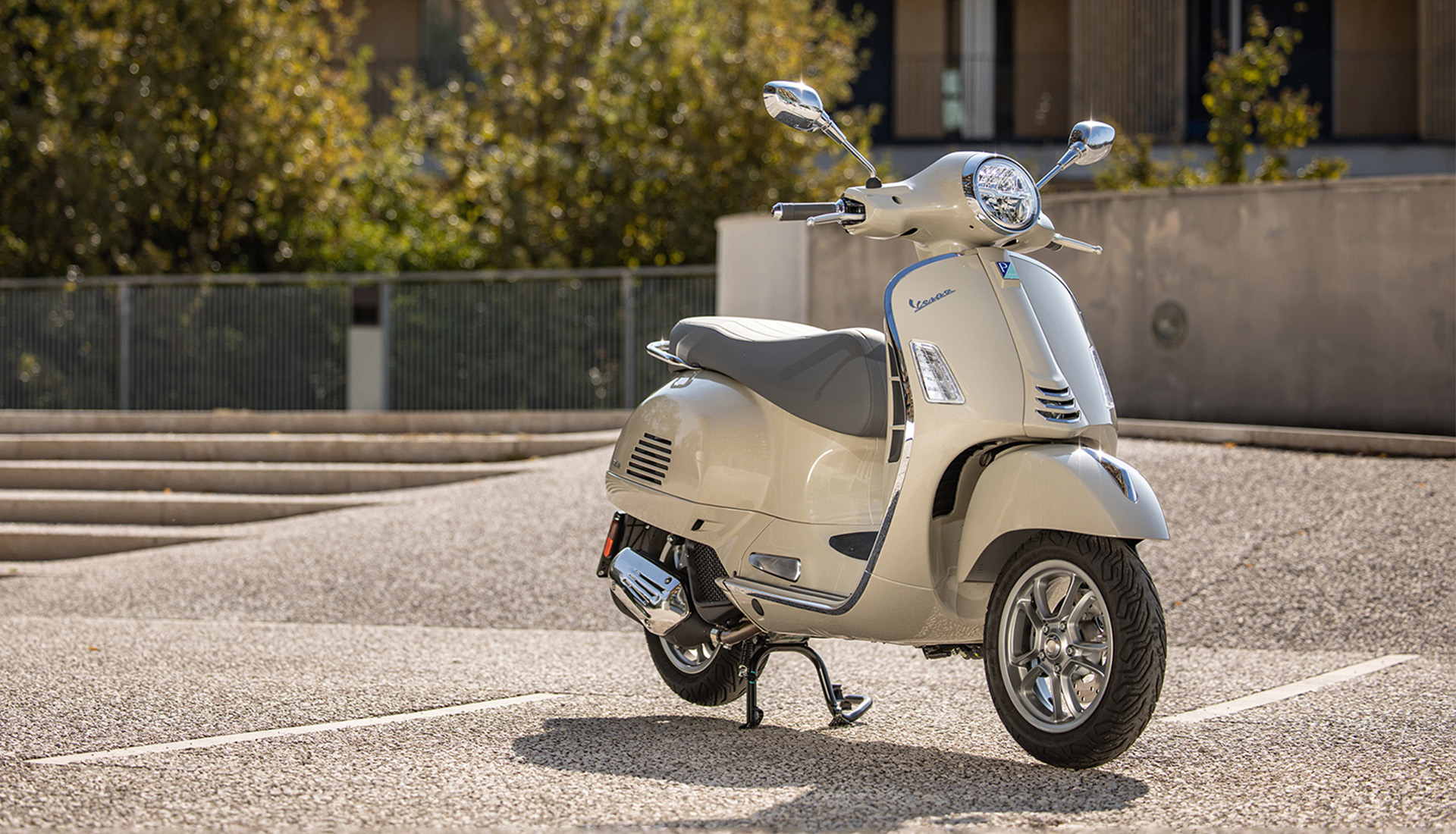Two-stroke oil, the elixir of life for all older Vespas. In many cases, the effect of the oil is underestimated, and its absence is usually only noticed when damage has already occurred. The tasks of the two-stroke oil are very simple. The main task of the oil film in the barrel path of the cylinder is to protect the moving engine parts such as pistons and piston rings from wear. This effectively prevents the dreaded “piston seizure” or piston sticking. Furthermore, the oil is to be burned cleanly without causing great smoke nuisance or clogging the exhaust.
In the following some important information is summarized, so that Vespa drivers can be safe and without accidents by piston sticking on the roads.
Not all two-stroke oils are the same
Basically, a distinction can be made between three types:
- Mineral two-stroke oil
- Semi-synthetic two-stroke oil
- Fully synthetic two-stroke oil
The starting point for the former is the classic mineral oil, which is obtained directly from petroleum. The mineral oil is rather less recommended for Vespas, because it has a very low load capacity and strong smoke and odor emissions when burned. In particularly old Vespa models, most of which are now in museums, however, only mineral oil can be used, as the added additives of the other types cannot be used here. For a wide selection of suitable products is worth a look in the SIP Scootershop tuning category.
Synthetic oils have a clear advantage
Due to the reasons mentioned above, Vespa riders almost only use semi-synthetic or fully synthetic oils. Fully synthetic oil is basically the measure of all things. Special load capacity in high speed ranges with residue-free combustion and low smoke emission ensure that many fall back on it. Even if it is often not required by manufacturers for the corresponding type, many opt for the highest-quality, but also most expensive variant.
Semi-synthetic oils, which consist of a mixture of mineral and fully synthetic oils and thus represent an intermediate form, are considered a good compromise. In terms of soot or smoke development, this type comes close to the fully synthetic oils without having the disadvantages of the mineral oils. For this reason, semi-synthetic oils are suitable for all those who want a good compromise between price and performance. Provided that no tuning measures have been carried out on the scooter, a semi-synthetic oil is usually also sufficient, since the additional proportion of additives is not entirely needed anyway.
Use of the Vespa determines grade
As already briefly mentioned, in most cases the decision is up to the rider. While the use of mineral oils is often already excluded by Piaggio/Vespa in the manufacturer’s specifications, a decision only has to be made with regard to a fully or partially synthetic oil.
Particularly with tuned Vespa engines, which are exposed to higher loads and speeds, it is imperative to use fully synthetic oils. In the normal range, on the other hand, it is quite sufficient to use the less expensive semi-synthetic oil.
A wide and by Vepsaexperten developed offer offers thereby SIP Scootershop, which offer a multiplicity of two-stroke oils of all kinds in different price ranges and container sizes.
Attention to the mixing ratio
Since the majority of Vespa engines are fueled directly with mixture, i.e. a mixture of gasoline and two-stroke oil, the mixing ratio must always be observed so that the engine does not run too “rich” or too “lean”. As a rule, a mixture in the ratio of 1 part oil to 50 parts gasoline is refueled in Vespa engines. However, even here an exact adjustment should always be made and the ratio minimally adjusted if necessary. To make it easier for future refueling procedures, the following is a mixing table with the values in the ratio 1:25, 1:40 and 1:50. For that SIP has a nice helping tool: Oil Bottle SIP Squeeze.
| Mix | 1:25 | 1:40 | 1:50 |
| Gasoline | Oil (in ml) | Oil (in ml) | Oil (in ml) |
| 1,0 Liters | 40 | 25 | 20 |
| 2,0 Liters | 80 | 50 | 40 |
| 3,0 Liters | 120 | 75 | 60 |
| 4,0 Liters | 160 | 100 | 80 |
| 5,0 Liters | 200 | 125 | 100 |
Small oil bottles in the 100ml size have proven to be a good aid for refueling, as the can can simply be mixed for 5 liters without having to measure extra oil. For smaller quantities, a simple 30ml syringe is recommended, with which the exact amount of oil can be measured, so that the mixing ratio can be precisely maintained.
All in all, the subject of oil in the Vespa sector is a relatively uncomplicated one, but one in which savings should not be made. Because a few euros for a higher quality oil may save an expensive repair of the piston and cylinder, which is triggered by an incorrect mixing ratio or oil. Therefore, during all refueling processes, close attention should be paid to which oil is added in which mixing ratio, so that the spring sun on the Vespa can be used optimally. In this sense – Let’s Vespa!



